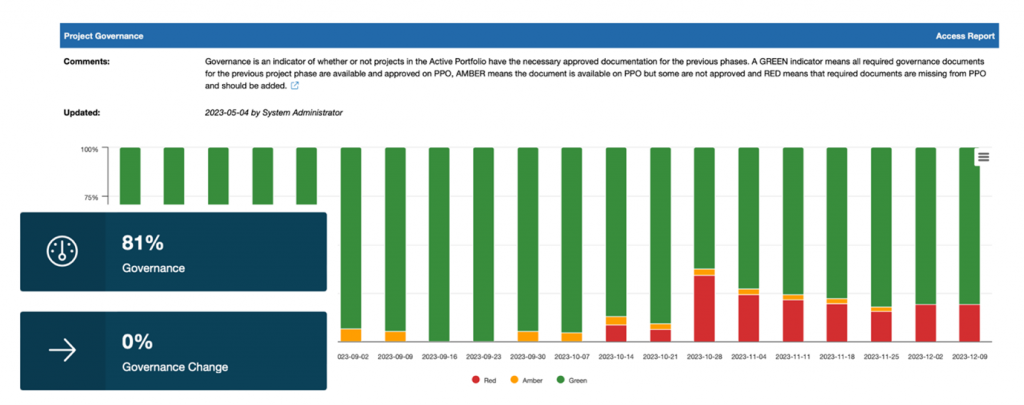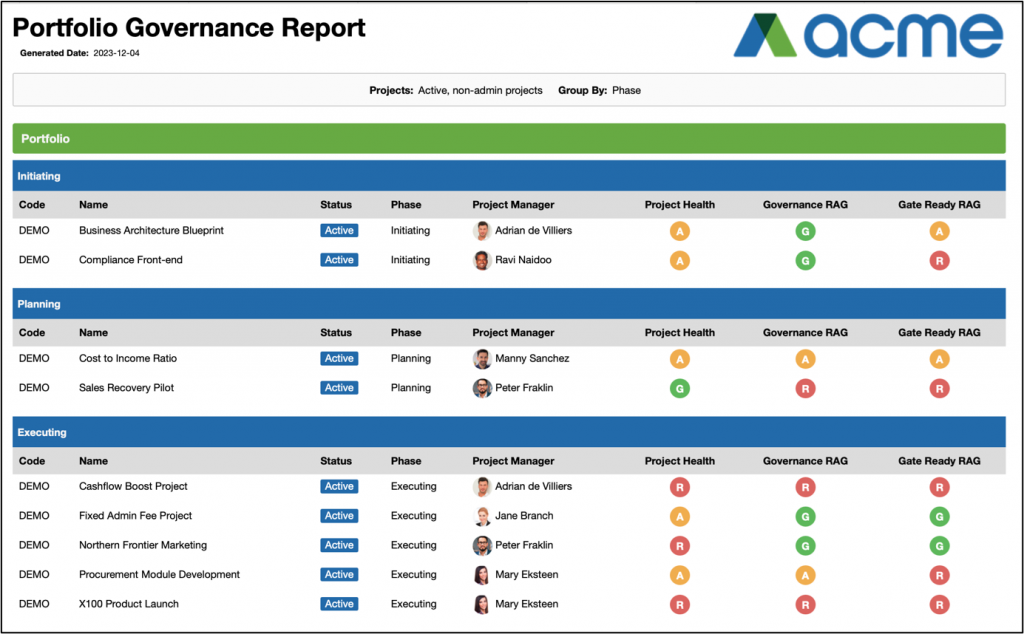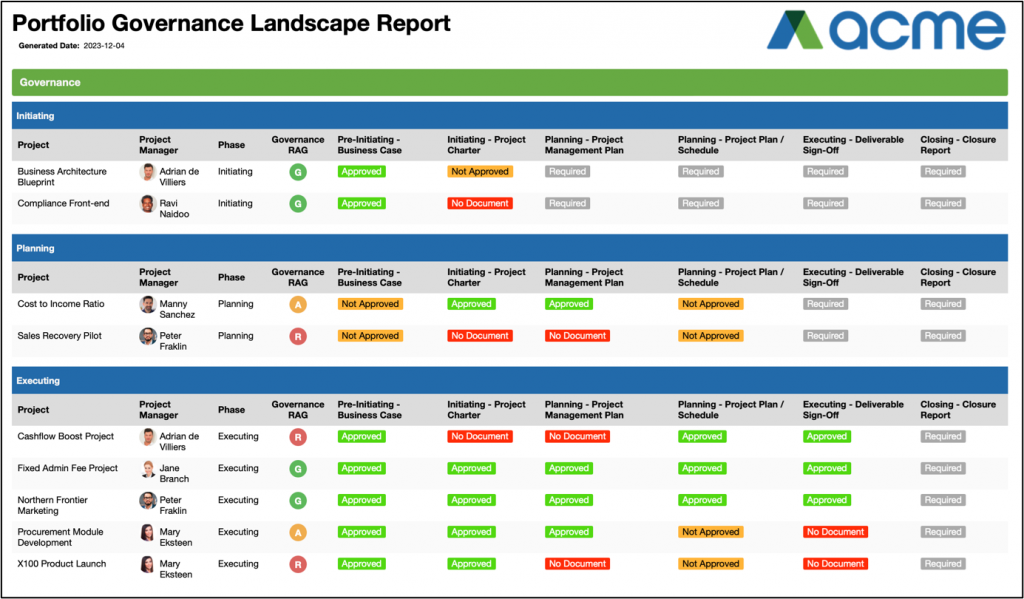Irrespective of what type of projects your organisation runs, what methodology is used and what type of Project Management Office (PMO) your organisation has, organisations with a high level of Project & Portfolio Management (PPM) maturity, or those looking to grow their maturity, manage project governance.
But what is project governance?
Project governance refers to the framework, structure, and processes put in place to ensure that projects are effectively controlled, managed, and ultimately successful within an organisation. It involves defining and implementing policies, procedures, and decision-making structures to guide how projects are initiated, planned, executed, monitored, and ultimately closed.
While governance is often seen as a pain, administration, red tape, or bureaucracy, it’s critical to a mature and successful project environment for the following reasons:
- Clarity and Alignment: Governance structures provide clarity on roles, responsibilities, and decision-making processes within a project. It ensures that everyone involved understands their roles and how they contribute to the project’s objectives.
- Risk Management: Governance helps in identifying, assessing, and mitigating risks associated with a project. It establishes protocols for risk management, ensuring that potential issues are identified early and dealt with effectively.
- Accountability: A well-defined governance framework holds individuals and teams accountable for their actions and decisions throughout the project lifecycle. It sets up mechanisms to track progress and evaluate performance.
- Resource Management: Governance structures help in efficient allocation and utilisation of resources, including finances, personnel, time, and equipment. This optimisation is crucial for project success and cost-effectiveness.
- Quality Assurance: Governance frameworks often include quality control measures, ensuring that the project meets predefined standards and delivers the expected outcomes or products.
- Stakeholder Communication: Clear governance facilitates effective communication among stakeholders. It ensures that stakeholders are informed about the project’s progress, changes, and any potential impact on their interests.
- Compliance and Regulations: Projects often need to adhere to certain legal or industry standards. Governance helps in ensuring compliance with relevant regulations and standards.
From our experience we’ve seen three key things that successful and mature organisations have done to manage governance:
- Educated the Project Community: They ensure all project stakeholders understand why project governance is required, the benefits and the process.
- Allow Adaptability and Flexibility: They allow for adaptability and flexibility thus enabling adjustments to changing circumstances or unforeseen challenges.
- Automate the Administration & Reporting: They automate governance tracking and compliance so that project managers and PMO staff don’t have to spend hours managing, tracking and reporting on governance.
Project Portfolio Office (PPO) includes the following functionality for the management, tracking and reporting on governance.
Governance Template per Type / Size / Portfolio
PPO allows our clients to set up template projects per project type, size, methodology, portfolio such that when a project is added to PPO the required governance is pre-loaded for that type. This ensures that there is not a one size fits all approach and more importantly there is no administration required from any PPO user. The governance requirements are automatically created and can be tracked by all users at any time:
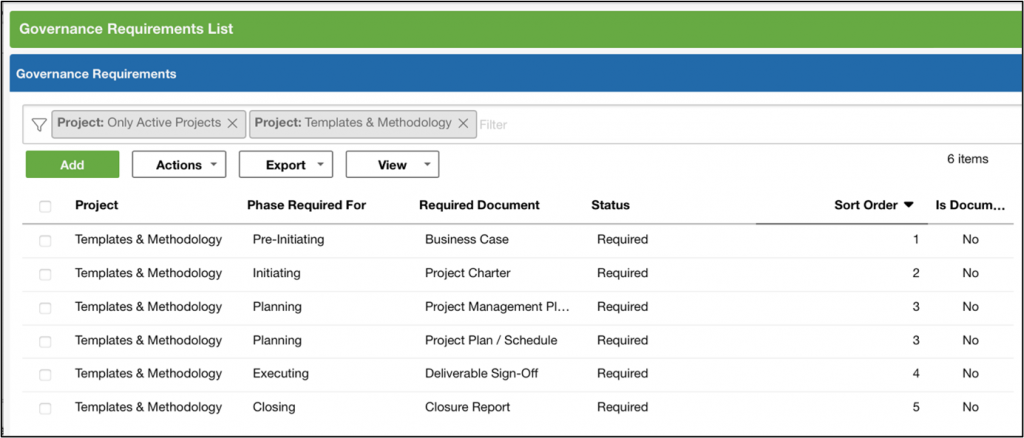
Flexible Governance
While a standard template is applied for each project type PPO allows for Flexible Governance. This functionality allows the project manager, typically in consultation with the project stakeholders and project management office (PMO) to indicate which of the standard governance requirements are required and which are not. The user (with the necessary access, which each client can define) can then set the status of some of the governance requirements as “Not Required”, provide a reason (for audit and traceability reasons) and update the project. As the project progresses through the lifecycle only the required governance requirements will be tracked.
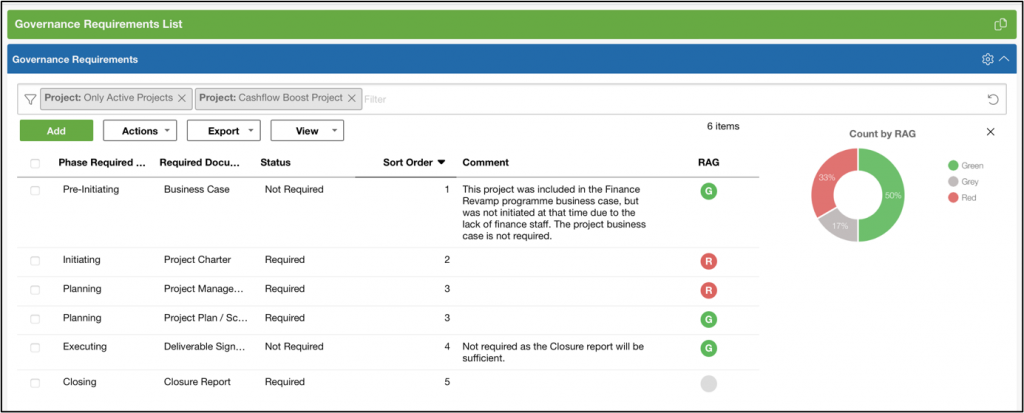
Governance Indicator (RAG)
To assist the project managers and PMO staff to quickly review and manage project governance every project on PPO has an automated Governance Indicator called the Governance RAG (Red-Amber-Green). For each set of governance requirements as per the template and flexibility described above, PPO will automatically review the project document repository (whether the physical documents are uploaded and stored in PPO or another source) and report on whether each requirement is GREEN (compliant, the required document is available in PPO and has been approved), AMBER (partially compliant, the document is in PPO but has not been approved by all) or RED (non-compliant, the document is not available in PPO). The overall Governance RAG will include all governance requirements for the previous phase and indicate whether the entire project is GREEN, AMBER, and RED. Thus, if the project is in execution, PPO will automatically check all governance requirements for all phases before execution. Users can quickly access the governance status of any project in the portfolio, drill into the project, and see which governance requirements are incomplete.
Gate Ready Indicator (RAG)
Most organisations, and a lot of PPO clients, manage a gated phase approach where projects are formally reviewed and approved at the end of each phase. To assist in this process PPO has an automated field called Gate Ready RAG which will indicate to the project manager and PMO staff that the project is ready for a gate review. The gate ready looks at all the governance requirements of the current and previous phases and once all the governance required have been met (i.e. are GREEN) then the overall Gate Ready RAG will be GREEN. This makes it easier for the project manager to know when the project is ready for a gate review and if the project is submitted for review and approval by the sponsor, owner, PMO or applicable approvers, it’s a very quick and simple test to quickly see whether the project has met all the requirements before drilling too far into the project.
Governance Reporting
To support governance PPO has several portfolio reports (shown above) and project reports to help the project manager and PMO quickly assess the status of governance for the portfolio or any specific project.
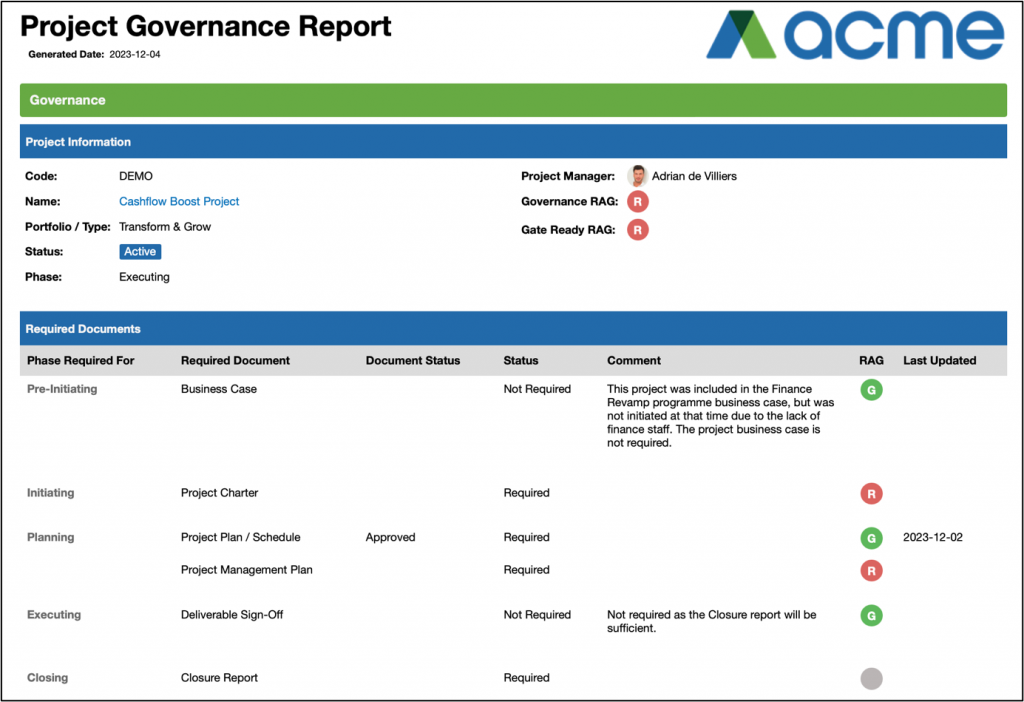
When implementing PPO for a client or when a client first introduces formal governance requirements there is typically a large back fill or data loading that’s required to ensure all existing projects in the portfolio have the required governance requirements in place or have set the flexible to Not Required for legacy projects. To support this process a governance landscape report allows the project managers and PMO staff to quickly see which documents are missing (Red, No Document) or partially completed (Amber, Not Approved). By using this report, the PMO can quickly track the back fill and data loading, saving hours of time and administration. Being real time, it’s a good tool to see the progress of this often-painful activity.
Trend Reporting
The PMO is an ever-evolving entity and changes to strategy, executives, organisation structures have an impact on the PPM maturity. In addition, to help track the adoption of new capabilities and the usage of Project Portfolio Office our clients have access to a detailed trend dashboard, called the Monitoring Dashboard, which tracks several key metrics for the PMO. One the metrics is governance. This metric allows the PMO to see real time the overall governance compliance of the portfolio, but to also see the trend weekly to track improvement or deterioration over time. A very useful tool to assist in improving maturity.
